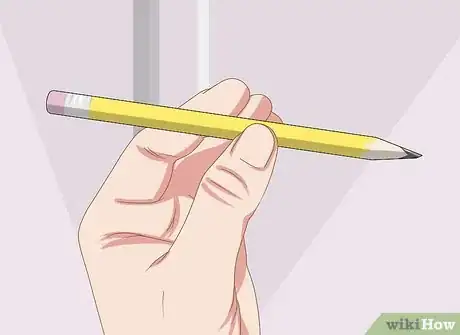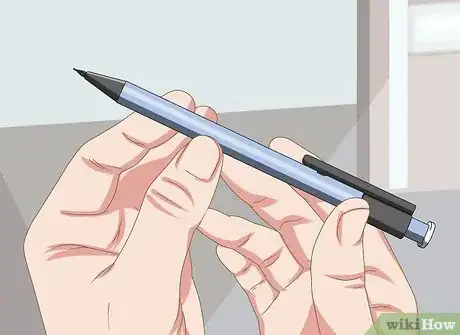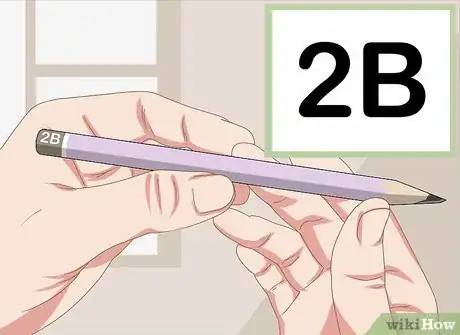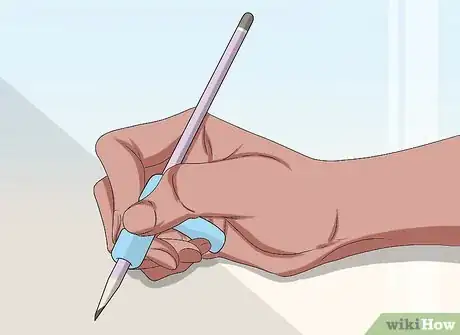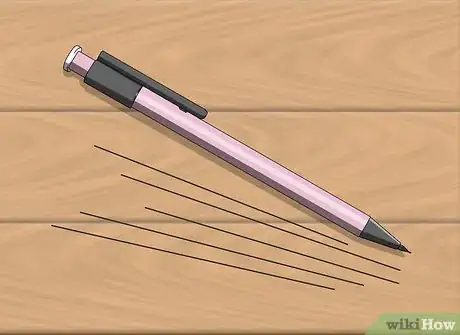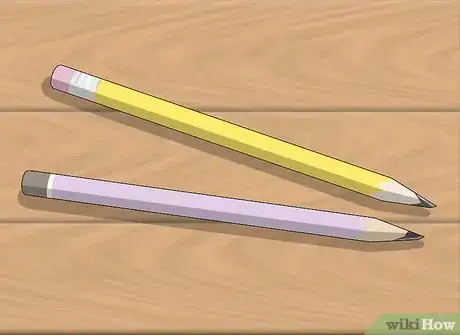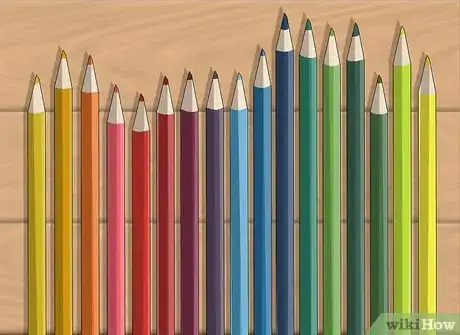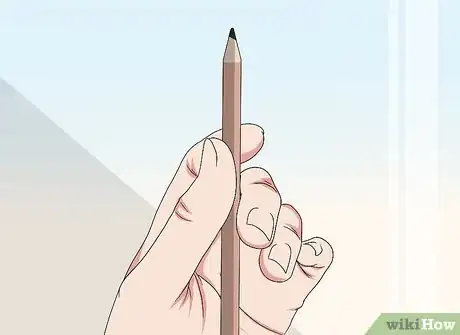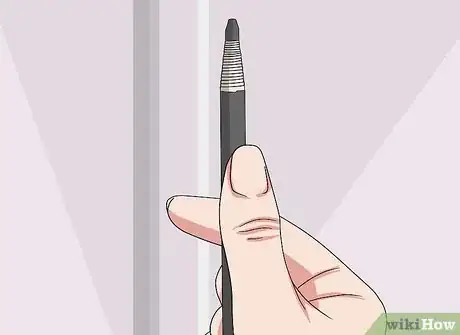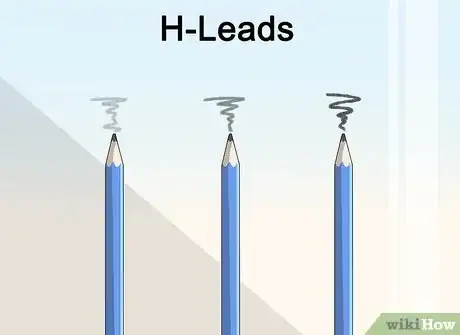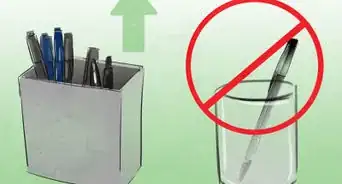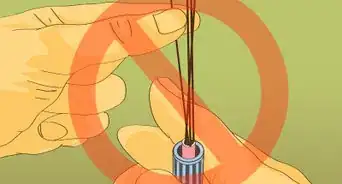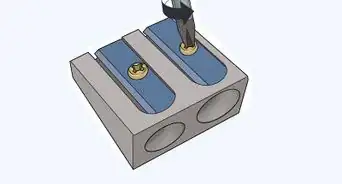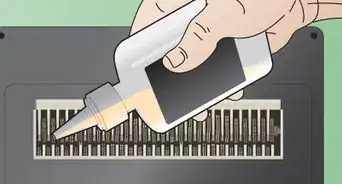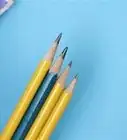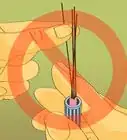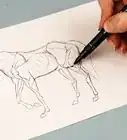This article was co-authored by wikiHow Staff. Our trained team of editors and researchers validate articles for accuracy and comprehensiveness. wikiHow's Content Management Team carefully monitors the work from our editorial staff to ensure that each article is backed by trusted research and meets our high quality standards.
There are 10 references cited in this article, which can be found at the bottom of the page.
This article has been viewed 242,142 times.
Learn more...
Whether you're creating a masterpiece or taking a test, choosing a pencil can be an important decision. To help make this choice, narrow your purpose down to writing or drawing. If you're really serious about variations in line quality, you can base your decision on lead hardness (from the softest grade of 9B to the hardest of 9H). This determines on how dark or light your lines will be.
Steps
Selecting a Pencil for Writing
-
1Choose wooden pencils for affordability and durability. Traditional wooden pencils with or without erasers are among the least expensive writing implements available. If money is tight, go for this option. You should also select wooden pencil if you press hard while writing, since the graphite in wooden pencils can withstand the pressure.[1]
-
2Select a mechanical pencil for convenience. This variety doesn't need sharpening and is usually refillable. Read the packaging for the length and diameter of lead that fits your pencil. A mechanical pencil might also be a good choice for standardized test, since its thinner lead is good for filling in small blanks.
- Mechanical pencils typically cost more, especially for good quality, non-disposable ones. On the other hand, many allow lead and erasers to be replaced, meaning that you can use one pencil for much longer.[2]
Advertisement -
3Choose HB (#2) lead for general use. This is the usual medium hardness of lead in wooden and mechanical pencils. You can use it for writing an essay or bubbling in the answers on a standardized test. If the pencil or the lead is not labeled, there's a good chance this is the hardness.[3]
-
4Purchase an ergonomic pencil. Consider this option if your hand cramps up after writing for several minutes. Look for a pencil with a large padded grip. It widens the shaft of the pencil, allowing your hand to relax as you write.
- You can also buy rubber or soft plastic grips that you slide on the end of a pencil. They're available in stationery stores and book stores in the same vicinity as pencils and pens.
Selecting a Pencil for Drawing
-
1Select a wooden pencil for linear variety. Sharpen the pencil for thinner lines. Allow it to blunt for thicker lines. The darkness or lightness of the line from a regular pencil depends on how much pressure you apply to the paper.[4]
-
2Choose a mechanical pencil for technical drawing. It can achieve a finer and more consistent line. For a preparatory sketch, a 0.5 millimetres (0.020 in) lead will be sufficient. If you're aiming for a more detailed drawing, go with a narrower lead, around 0.3 millimetres (0.012 in).[5]
-
3Keep a variety of lead hardness grades on hand. Drawing involves creating a variety of lines and tones. Use H-grade leads for drawing light, solid lines that you don't want to smear. Opt for a B-grade lead for creating shadows or other parts of a drawing that require smudging. B-grade leads also create much darker lines and tones.[6]
-
4Use colored pencils to outline or color forms on paper. If you're doodling on notebook paper or computer paper, go for the least expensive brand like Crayola. Sharpen them like a wooden pencil to achieve thin lines. Allow them to get blunted for thicker lines.[7]
- If you're serious about art, visit an art store for high-quality colored pencils. They're more expensive, but you may find that they give a stronger color than you'll find in typical colored pencils. Some brands are much easier to blend than the less expensive brands.[8]
-
5Select charcoal pencils for deep black or gray lines. Like straight charcoal in stick form, this pencil is based on wood that has been burnt to the point where only the carbon is left. Unlike regular charcoal, they write a bit more smoothly. Apply strong pressure for heavy, dark lines. Ease up on the pressure for finer lines. Like lead pencils, charcoal pencils come in a variety of hardnesses. Buy them at any art supply store.[9]
-
6Choose carbon pencils for smooth black lines. Go with this variety if you're looking for true black, which you can't get with graphite. These pencils are based on lampblack, the byproduct of burning oil. Carbon also comes in varying hardnesses and can also be obtained in stick form. Buy them in any art supply store.[10]
-
7Use a grease pencil for glossy surfaces. Also known as china marker, this variety of pencil is based on a waxy crayon-like material. Choose this variety if you need to make temporary marks on smooth surfaces like ceramic, metal and, plastic. Sharpen it by pulling a string to expose more of the waxy point. You can buy them at the art supply store.[11]
Selecting Lead Hardness
-
1Select H leads for finer lines. H-grade leads are the hardest leads. Ironic as it sounds, these leads do produce finer lines. They're not as easy to sharpen, but the crispness of the lead's edges lasts longer than softer leads. For the lightest quality, opt for 9H. If you prefer darker marks from a soft lead, use H.[12]
-
2Use B leads for darker marks. B-grade leads are the softest leads. Choose this variety if you want to sharpen the lead more quickly and easily. The down side is that they lose their crisp edges more quickly. Use 9B for the darkest quality lines and B for the lightest.[13]
- If you're drawing, you might outline with a harder lead, then darken and shade with a softer lead.
-
3Select F lead for medium-grade lines. F (#2 ½) is right in the middle of the hardness and darkness scale with the #2 lead. Like #2, it sharpens to a fine point. Its line quality is only slightly lighter and harder.[14]
- While this lead is safe for drawing and general writing, it's not recommended for standardized tests. Not all test readers will give accurate results for even a slight variation from #2.
Community Q&A
-
QuestionWhat kind of mechanical pencil should I use?
 Community AnswerIt depends on what you're going to use it for. If you want to sketch with it, maybe a 0.5mm one is better. If you use it for heavier drawings, a 0.7mm one is good. A 0.9mm mechanical pencil is thicker, so you can use it for writing. The best general purpose choice is probably 0.7mm, as it's not too thick and not to thin.
Community AnswerIt depends on what you're going to use it for. If you want to sketch with it, maybe a 0.5mm one is better. If you use it for heavier drawings, a 0.7mm one is good. A 0.9mm mechanical pencil is thicker, so you can use it for writing. The best general purpose choice is probably 0.7mm, as it's not too thick and not to thin. -
QuestionI am going to use a mechanical -- is there anything I should know?
 Community AnswerYes. The lead of mechanical pencils can break very easily, so do not push or press too hard. Also, high quality mechanical pencils are expensive.
Community AnswerYes. The lead of mechanical pencils can break very easily, so do not push or press too hard. Also, high quality mechanical pencils are expensive. -
QuestionDo I need to check the kind of lead it has, such as HB or 2B?
 Community AnswerHB and 2B designate the hardness of the lead, so if that matters to you, definitely check. An HB pencil is middle-of-the-road in terms of hardness; 2B is slightly softer and blacker.
Community AnswerHB and 2B designate the hardness of the lead, so if that matters to you, definitely check. An HB pencil is middle-of-the-road in terms of hardness; 2B is slightly softer and blacker.
Warnings
- High-quality mechanical pencils can get expensive.⧼thumbs_response⧽
- Be careful when buying mechanical pencils, some are really cheap and break very easily.⧼thumbs_response⧽
References
- ↑ https://www.jetpens.com/blog/guide-to-wooden-pencils/pt/633
- ↑ http://www.cultpens.com/pencyclopedia/guide-to-mechanical-pencils
- ↑ https://pencils.com/what-is-a-no-2-pencil/
- ↑ https://www.jetpens.com/blog/picking-the-perfect-pencil-hardness-grade/pt/475
- ↑ http://www.cultpens.com/pencyclopedia/guide-to-mechanical-pencils
- ↑ https://www.jetpens.com/blog/picking-the-perfect-pencil-hardness-grade/pt/475
- ↑ http://www.linesacross.com/2016/03/coloredpencils.html/
- ↑ https://www.thoughtco.com/guide-to-choosing-colored-pencils-1123364
- ↑ https://www.youtube.com/watch?v=kF8Luvkk91w
About This Article
To choose a pencil for writing, start by testing how the pencils feel in your fingers, to help you decide which you like best. Try writing with a wooden pencil first, as it’s cheap and ideal for general use. For example, try the HB number 2, which is a standard pencil of medium thickness that writes well on paper and since it won’t snap easily, makes a good choice if you press hard when writing. However, if you need accurate, fine lines for your writing, try a mechanical pencil because it is easy to control. Although more expensive, you can reuse it many times by inserting new leads when the old ones break. And if you get hand cramps when writing, try an ergonomic pencil with a padded grip, since this allows you to relax your hand. For more tips, including how to choose a pencil for drawing, read on!
